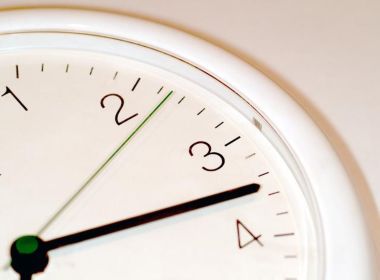Determine Never to Be Idle: A Simple Productivity Strategy

Determine never to be idle. No person will have occasion to complain of the want of time who never loses any. It is wonderful how much can be done if we are always doing.Thomas Jefferson
We lack time not because there is not enough time but because we lose too much of it. That’s why I believe this quote represents a simple but effective strategy to boost our productivity. If we determine never to be idle, we will minimize lost time and make every moment valuable.
Looking at myself, I often waste time by being idle without realizing it. So “determine never to be idle” is a good strategy for me. It helps me recognize idle time and bring me back to the state of doing. While I still have idle time here and there, I learn to minimize it. Someday I hope I can eliminate it.
First of all, let’s define what is meant by “idle”. In my opinion, idle time is the time we spend on something other than what we are supposed to do. We know we should do something, but we procrastinate doing it or get distracted by something else. That is idle time.
There are three simple steps to minimize idle time:
1. Plan what you want to do each day
The first step is to have a clear idea of what are considered “not idle”. Plan what you want to do each day. For this purpose, I have some routines that cover most of what I need to do daily. I also set a few most important tasks of the day, though in some cases they are already covered by my daily routines. All these give me a clear idea of what is “not idle”.2. Watch for idleness
The next step is watching for the signs of idleness. Since you already have a plan, it should be easier to do that. Ask yourself every now and then: “Am I now idle?”The simple clue of idleness is anything that is outside of your plan. The exceptions are unexpected things which have higher priority, such as family-related tasks.
Here are some examples of idleness to help you recognize them:
- Random browsing
- Reading email when it’s time to do something else
- Unnecessary conversations
- Too much thinking before taking action
- Watching TV more than you should
- Lying on the bed, unless you decide that it’s time for rest
3. Get back to doing whenever you are idle
Whenever your answer to the question “am I now idle?” is yes, you should go back to the state of doing as soon as possible. Stop being idle and start doing what you are supposed to do. Your plan in #1 should help you decide the right thing to do without spending too much time for thinking.***
These three steps are simple, but they are not easy to apply. In my case, the problem is usually #2 and sometimes #3. I may not realize that I’m idle, or when I do, sometimes I’m too lazy to go back to doing. But making a conscious effort to never be idle improves my situation over time.
You can also see this strategy from a different point of view. Instead of seeing it as minimizing idle time, you can also see it as maximizing doing time. What you should do is maximize your share of doing time each day. Let’s say you are awake 17 hours a day. You should aim to have as much as possible of it in the state of doing. If the current rate is 50%, you should increase it to 60%, 70%, and so on.
What do you think? Do you have other tips to not be idle? Feel free to share them in the comments.
SOURCE: www.lifehack.org

Comments